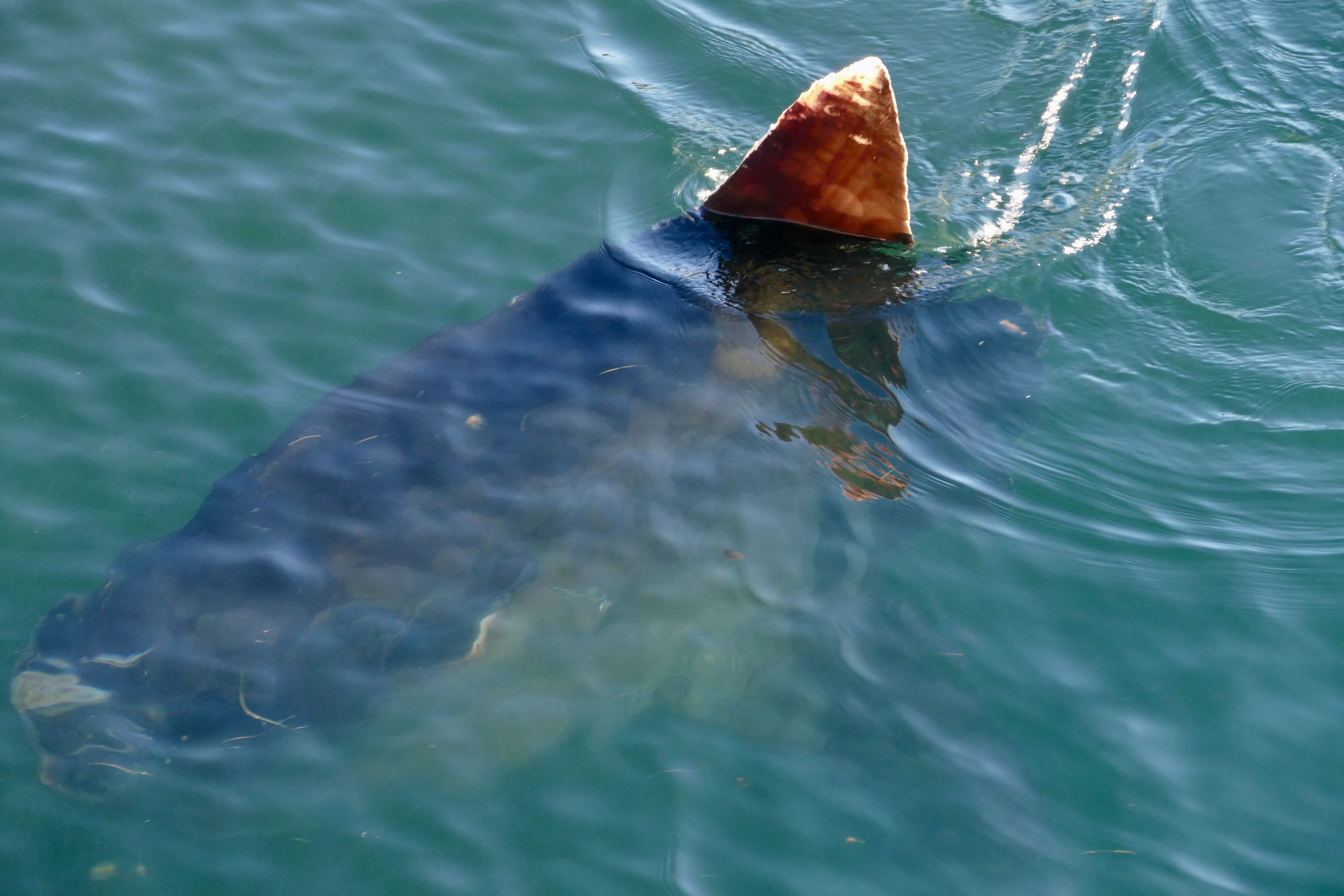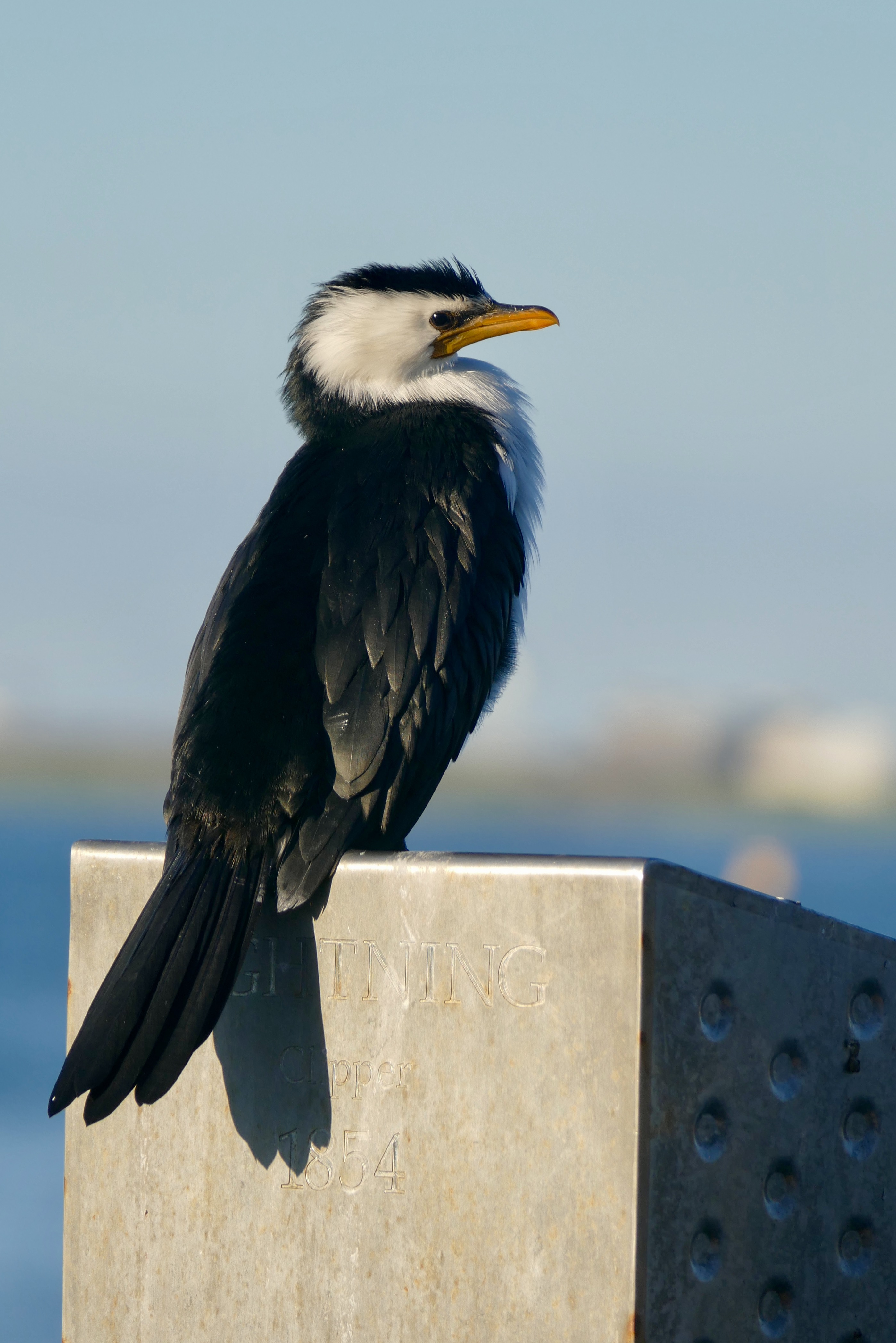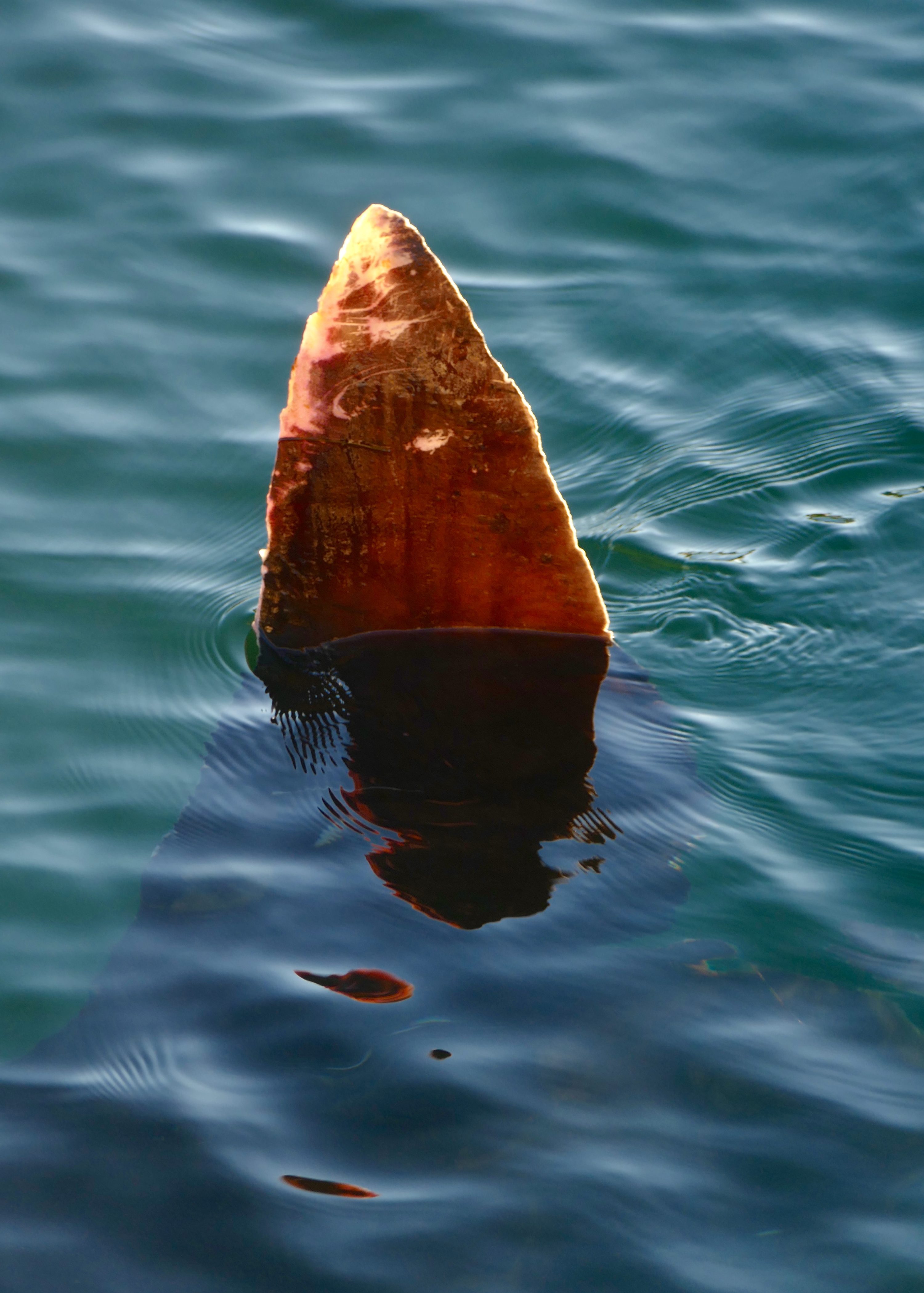When is a “huge shark” not a shark at all?
(All photos copyright Doug Spencer, taken late afternoon on June 10, 2017, less than half a minute’s walk from the beach end of Cunningham Pier – a short walk from the CBD of Victoria’s 2nd largest city)
In May this year there were reports of a “huge shark” in Corio Bay, off Geelong.
As reported in The Geelong Advertiser, those reports were wrong, and the truth was rather more remarkable.
Corio Bay is part of the very large Port Philip Bay, on which Melbourne’s beaches sit.
The “huge shark” was a sunfish.
Sunfish devour a prodigious amount of jellyfish, but pose no threat to humans.
They are the largest of all bony fish; a fully grown member of the largest species – the ocean sunfish or common mola (Mola mola) – typically weighs up to a tonne. The largest one caught weighed 2.6 tonnes – huge, but far smaller and lighter than the largest cartilaginous fish.
Cartilaginous fish include sharks, skates and rays; the biggest are Whale sharks, which typically reach 9 tonnes, and can exceed 20.
Most humans never see a live sunfish, let alone one right beside a pier, mere metres from the shore.

Just a handful of very excited humans were very lucky, late last Saturday afternoon, when a grey winter day in Geelong turned suddenly sunny and very still.
Almost certainly, “our” sunfish was the same individual whose unusual presence so near to Geelong’s waterfront had sparked May’s “huge shark” rumours.
Most visitors to Geelong’s waterfront will not see a sunfish, but it is still a rewarding destination, as you will soon see in this post’s sequel.


AMAZING!